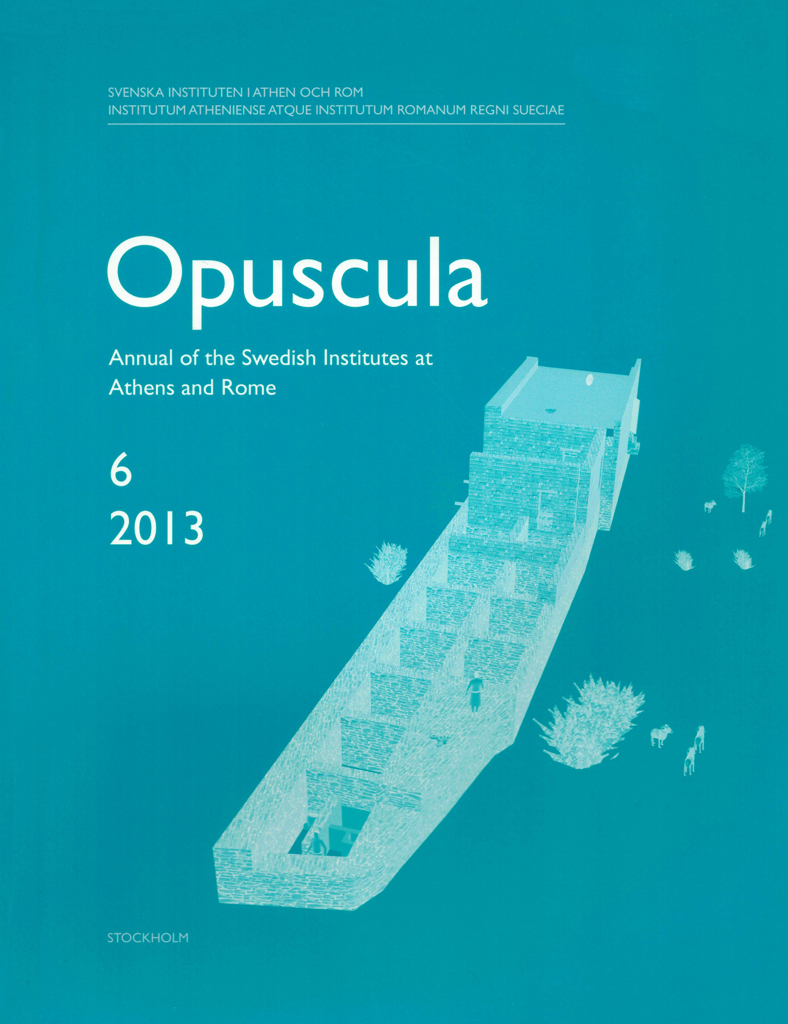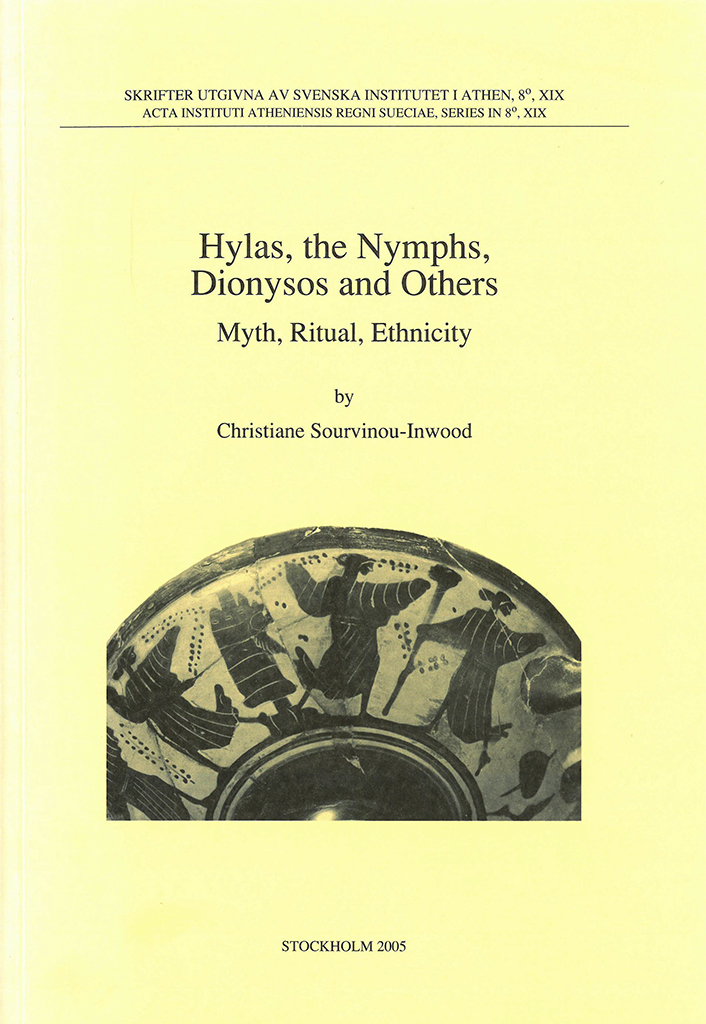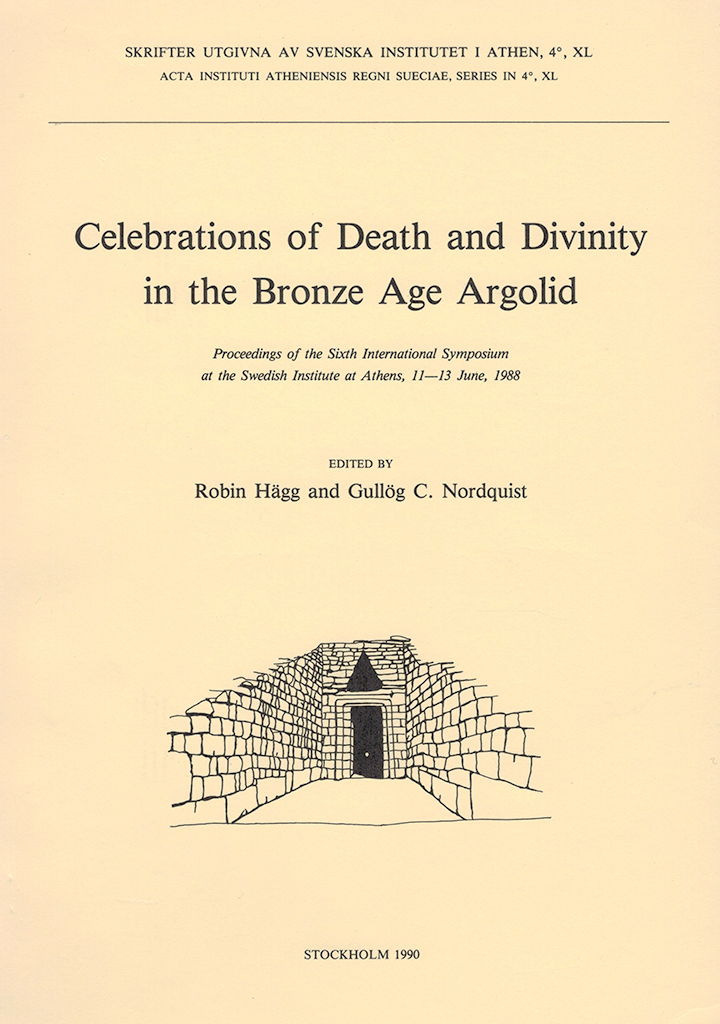Opuscula is published by the Swedish Institutes at Athens and Rome, with the aid of a grant from the Swedish Research Council. Distributed by Eddy.se AB. View journal at ERIH PLUS. All content available with open access. Textual evidence for Aegean Late Bronze Age ritual processions By Jörg Weilhartner Abstract In the Aegean Late Bronze Age there exists rich iconographic evidence for the ritual practice of processions, demonstrating the practice’s importance within Mycenaean official cult. In contrast, due to the nature of the Linear B documents which are the records of the palace administration referring to particular aspects of the palace economy, hardly any explicit textual information about processions in Mycenaean times is available. Among the rare exceptions is the outstanding tablet Tn 316 from Pylos whose lexical items seem to point to a ritual of this kind. Moreover, the term te-o-po-ri-ja/*θεοφóρια (“the carrying of the gods”) is generally understood as the name of a religious festival in which a (terracotta) cult figurine representing a deity was carried in a procession. Some additional textual evidence on processions may be provided by terms ending in -po-ro/-φóρος. Along these lines, this paper argues that the term to-pa-po-ro may denote men whose description…
Published by the Swedish Institute at Athens. Distributed by Astrom Editions. Hylas, the Nymphs, Dionysos and others. Myth, ritual, ethnicity. Martin P. Nilsson Lecture on Greek Religion, delivered 1997 at the Swedish Institute at Athens By Christiane Sourvinou-Inwood Abstract The focus of this book is the reconstruction of the mythicoritual nexus of Hylas in Kios in Mysia through the in-depth investigation of the evidence (surviving in accounts by, and so shaped by the filters of, outsiders) and also of other issues implicated in its Problematik: ethnicity, cultural and religious interactions between Greeks and non Greeks, colonial discourses (with special emphasis on the foundation mythopoea of Kios’ mother city, Miletos), the nature and function of the Nymphs, the different personalities of Dionysos, advent festivals, certain problematic categories of cult recipients. Hylas’ myth and ritual had been constructed, I conclude, through complex interactions between several Greek mythicoritual schemata and included also elements that appear in non Greek nexuses located in the area of Kios. The myth was both a foundation myth constructing cultural continuity with the heroic age and an immortalization myth: a Greek youth was abducted by Nymphs and became a deity rooted in the landscape, symbolically rooting the colony to…
Published by the Swedish Institute at Athens. Distributed by Astrom Editions. Celebrations of death and divinity in the Bronze Age Argolid. Proceedings of the Sixth International Symposium at the Swedish Institute at Athens, 11–13 June, 1988 Edited by Robin Hägg & Gullög C. Nordquist Abstract Twenty-four papers on various aspects of burial customs and religious cult practice in the region Argolis (Greece) during the Bronze Age, read at an international conference in Athens; the papers are followed by transcripts of the discussions of the symposium. The papers are arranged in six groups, discussing (1) ceremonial practices in the Early and Middle Helladic periods, (2) mortuary customs, state formation and Mycenaean society, (3) burial rites in tumuli, tholoi and chamber tombs, (4) symbols and symbolism in Mycenaean celebrations, (5) Mycenaean cults and cult practices, and (6) religious aspects of the post-Bronze-Age period. Contents Preface (p. 7) Ceremonial practices in the Early and Middle Helladic periods Daniel J. Pullen, ‘Early Helladic burials at Asine and Early Bronze Age mortuary practices’, pp. 9–12 Miriam Caskey, ‘Thoughts on Early Bronze Age hearths’, pp. 13–21 Carol Zerner, ‘Ceramics and ceremony: Pottery and burials from Lerna in the Middle and early Late Bronze Ages’, pp. 23–34…



